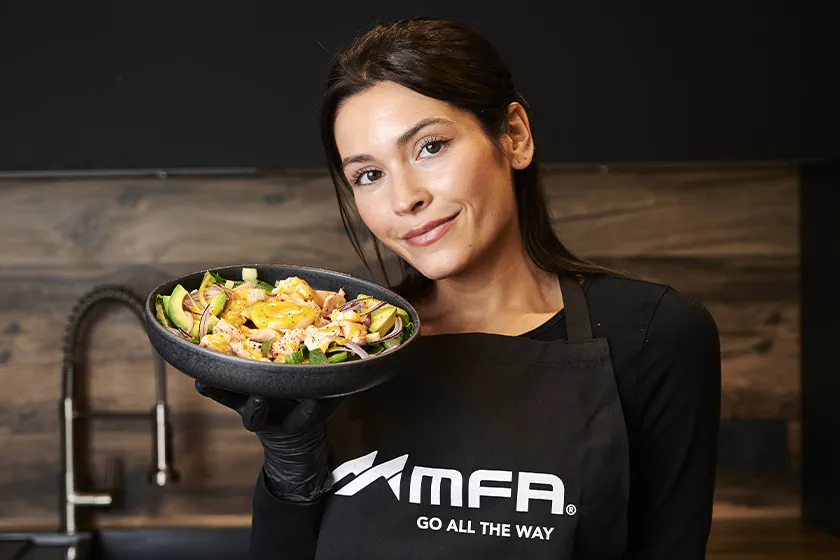Quick and Easy Meal Prep Tips for a Healthier Week

In today’s busy world, planning meals, shopping, cooking dinner, and cleaning up can feel incredibly overwhelming. As a result, many people turn to takeout or convenience foods, which can be more expensive and less nutritious.
The good news? Meal prepping makes healthy eating easier and more manageable. With a few simple strategies, you can create quick, nutritious meals that will keep you on track all week long.
Start with a Simple Plan
Meal prepping doesn’t mean you need to cook an entire week’s worth of food in one day. Start small! Choose a few key meals to prep, like breakfasts, lunches, or snacks. Decide on a meal prep day, such as Sunday or Wednesday, and set aside an hour or two to get things ready.
Also, consider whether you prefer batch cooking (preparing large amounts of food to portion out later) or individual meals (fully prepped and portioned meals stored in containers). Both approaches work, but it just depends on what fits you and your lifestyle.
For instance, if you are meal prepping for your family and not just yourself, it makes sense to do batch cooking, where you can portion out the foods to each family member at meal times.
Pick Easy, Versatile Ingredients
An essential step of stress-free and budget-friendly meal prep is to choose ingredients that can be used in multiple meals. This way, you can mix and match items throughout the week without getting bored.
- Proteins: Grilled chicken, turkey, lean meats, fish, tofu, hard-boiled eggs, beans
- Carbs: Brown rice, quinoa, sweet potatoes, whole-wheat pasta
- Healthy fats: Avocados, nuts, olive oil, seeds
- Vegetables: Broccoli, spinach, bell peppers, carrots, cucumbers
For example, grilled chicken can be used in salads, wraps, and grain bowls, while roasted veggies can be used as a side dish or added to omelets.
Use Time-Saving Cooking Methods
There are simple ways you can prep healthy meals without spending hours in the kitchen or dirtying up a bunch of pots and pans. Using efficient cooking methods can cut your prep time in half.
- Sheet pan meals: This is a great way to cook most of your meal components (protein, carbohydrates, and veggies) in just one step. You can roast chicken, fish, or meat with potatoes and veggies all in one pan for easy clean up. There are tons of sheet pan meal recipes online that you can explore!
- Slow cooker or instant pot: This is a great way to prep foods without having to stand in the kitchen watching over everything. Toss in ingredients, press a button, and let it cook while you do other things! This is an excellent way to make chilis, stews, soups, and rice dishes that you can consume all week long.
- Batch cook grains and proteins: Instead of having to cook chicken every day or boiling your grains daily, cook a big batch and do it all at once. Cook the entire bag of quinoa or rice and keep it in the fridge to use with meals throughout the week. The same goes for your protein. Cook your meats one to two times per week and keep them conveniently ready in the fridge for up to 3-4 days.
- Pre-chopped veggies and pre-washed greens: If the thought of rinsing, chopping, and dicing vegetables seems tedious or time-consuming to you, buy these ready-to-go items to save yourself some prep work. It is worth noting that these pre-washed and chopped items tend to be a bit more expensive.
Small Prep Steps Can Still Save Time
Even if you don’t want to prep entire meals, doing small tasks ahead of time can still make cooking much easier throughout the week. These are simple time savers that can make cooking meals quicker, without doing full meal prep.
- Marinate proteins ahead of time: Throw chicken, fish, or tofu into a marinade the night before, so when it’s time to cook, the flavor is already infused.
- Chop vegetables in advance: When you get home from grocery shopping, pre-cut your veggies like onions, peppers, carrots, or cucumbers, so they’re ready to cook or toss into a salad when you need them.
- Portion out snacks: Divide nuts, fruit, or hummus into small containers for easy grab-and-go snacks.
- Pre-cook staple ingredients: Having cooked quinoa, roasted sweet potatoes, or hard-boiled eggs on hand makes assembling meals effortless.
Even doing just one or two of these steps can make a big difference when you’re short on time!
Keep it Balanced
A great meal prep plan includes a balance of protein, healthy carbs, and fats. A general guideline is to make ½ of your plate veggies, ¼ of your plate protein (fish, chicken, turkey, lean meat, tofu), ¼ of your plate whole grains or starchy vegetables (quinoa, brown rice, sweet potatoes), and a small portion of healthy fats (avocadoes, olive oil, nuts, seeds).
To avoid boredom with meal prepping, switch up flavors by using different seasonings, dressings, or sauces. For example, if you are prepping chicken for multiple days in a row, one day you can toss it in buffalo sauce, and the next day you can pair it with teriyaki!
Final Thoughts
Meal prepping can seem intimidating at first, especially if you are new to cooking. But, by starting with just one or two meals or simply prepping ingredients in advance, you can make the process much more manageable. Over time, it becomes a habit that saves time, reduces stress, and makes healthy eating effortless. With a little planning, you’ll find that meal prepping not only helps you eat healthier but also makes your week run smoother.
Jordana Tobelem, RD, LDN, is a Registered Dietitian passionate about empowering individuals to reach their full potential through nutrition education. Drawing on her clinical dietetics background, she offers consulting services to a variety of healthcare brands and organizations. Jordana stays up to date with the latest nutrition research to develop impactful content for her clients. She holds dual academic degrees in Business and Dietetics.


